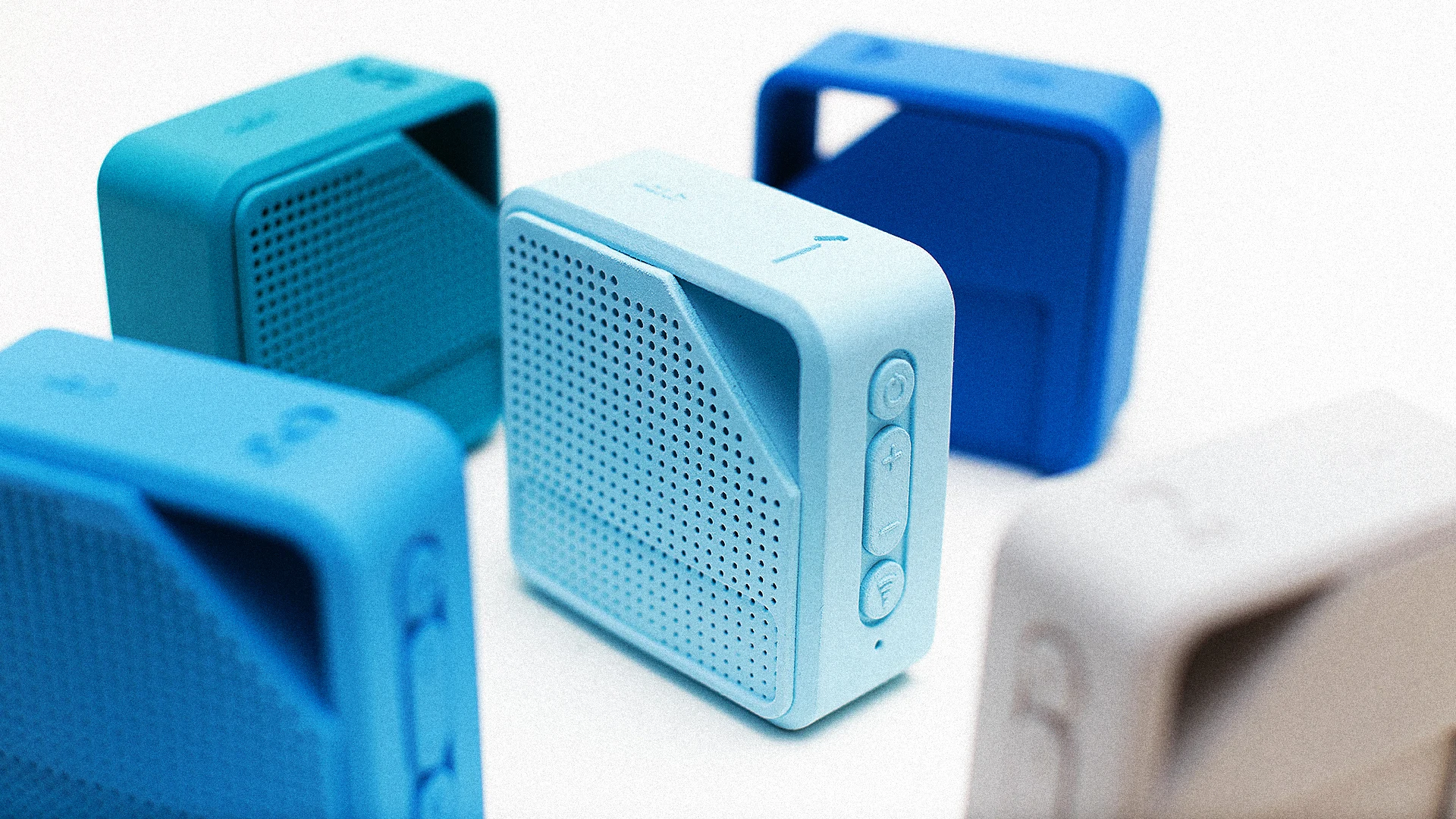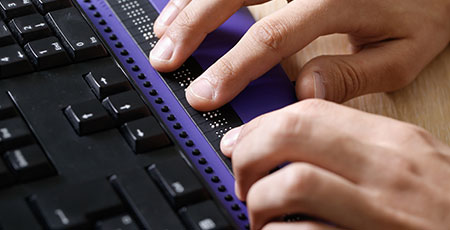Empowering Freedom With Assistive Modern Technology for the Blind
The integration of assistive technology right into the lives of people with aesthetic problems stands for a substantial innovation in promoting self-reliance and self-sufficiency. From ingenious screen viewers to advanced smart walking sticks, these devices not only boost day-to-day navigation and communication yet also encourage individuals to engage meaningfully in numerous elements of life. As we discover the myriad benefits and real-world applications of these innovations, it becomes crucial to check out the hidden elements that add to their efficiency and the potential for future growths in this important area.
Review of Assistive Technology

The development of assistive modern technology is grounded in concepts of inclusivity and empowerment. Technologies in software program, hardware, and sensory improvements supply customers with choices customized to their particular demands. From display readers that transform text to speech, to responsive devices that communicate information with touch, these devices transform the method individuals engage with their environments.
In addition to practical applications, assistive modern technology promotes better social addition and engagement in various markets, including education and employment (Speech-to-text devices for low vision). As research study and growth continue to progress, the potential for assistive technology to even more improve the lives of aesthetically impaired individuals stays encouraging, leading the way for a more fair culture where everyone can flourish
Types of Assistive Tools
A variety of assistive devices have emerged to sustain individuals with visual disabilities, each created to fulfill details needs and improve everyday performance. These tools range from low-tech services to state-of-the-art developments, supplying varied options for individuals.
Low-tech gadgets include magnifiers and large-print materials that aid in reading and writing. Braille tools, such as Braille slates and styluses, make it possible for responsive analysis and communication. Positioning and wheelchair help, like white walking canes, aid customers browse their environment securely.
On the greater end of the spectrum, electronic magnification systems and screen viewers offer significant support. Digital magnifiers allow users to increase the size of message and pictures on displays, while display viewers transform electronic content into manufactured speech, helping with access to info on mobile phones and computers.
Smart device applications additionally play a vital function, offering features like message acknowledgment and navigation help. Wearable technology, such as wise glasses equipped with increased truth, is emerging as a promising tool to boost situational recognition.
Benefits of Assistive Technology
The integration of assistive modern technology dramatically improves the lifestyle for people with visual problems. These innovations encourage users by advertising freedom, enabling them to browse their environments more properly and do daily tasks with greater convenience. For example, screen readers and magnification software program enable people to access electronic info, fostering academic and expert opportunities that might have formerly run out reach.
Moreover, assistive tools such as smart walking canes and GPS applications provide real-time navigation support, improving movement published here and safety and security. This increased freedom not just boosts self-confidence but likewise urges social engagement, permitting individuals to get involved more fully in their communities.
Assistive modern technology additionally facilitates communication, helping users get in touch with others via voice acknowledgment and text-to-speech applications. This capacity is crucial for preserving partnerships and accessing critical information.
In addition, the customization choices available with many assistive technologies make sure that users can tailor devices to their specific needs, additionally boosting use and efficiency. In general, the advantages of assistive modern technology for people with visual disabilities are extensive, promoting a more inclusive culture where every person can seek their objectives and goals.
Study and Success Stories
Highlighting the transformative impact of assistive technology, countless study show just how individuals with aesthetic impairments have efficiently integrated these devices right into their day-to-days live. One compelling instance includes a college trainee that made use of screen reading software application to browse scholastic materials and online sources effectively. This technology not just facilitated her education and learning however additionally enhanced her confidence in joining conversations and group projects.
One spectacle frames more study includes a professional who employs a mobile phone application created for navigating and object recognition. By utilizing this app, he has restored freedom in both his individual and job environments, permitting him to commute independently and engage with colleagues much more efficiently.
In addition, a retired person shared her experience with braille e-readers, which allowed her to access a huge variety of literature and stay connected with her area through publication clubs.
These success stories highlight the important function of assistive innovation in fostering freedom, enhancing quality of life, and advertising social assimilation for individuals with visual impairments (Speech-to-text devices for low vision). By embracing these cutting-edge tools, users can overcome difficulties and confiscate opportunities that add to their individual and expert fulfillment

Future Trends in Assistive Innovation
Advancement in assistive innovation is poised to redefine the landscape of assistance for people with visual disabilities. Emerging fads stress the assimilation of artificial knowledge (AI) and artificial intelligence, which enhance the capability of tools that aid with navigating and details ease of access. For example, AI-driven applications are currently with the ability of analyzing visual information in real-time, making it possible for customers to involve with their atmosphere extra separately.
Furthermore, the development of wearable technology is progressing rapidly. Smart glasses outfitted with augmented fact (AR) can give audio summaries of surroundings, changing just how users interact with public areas. These tools not only advertise freedom but additionally foster social inclusion.
In Addition, the Internet of Things (IoT) is making homes smarter, enabling seamless connectivity in between everyday devices and assistive devices. This connectivity encourages users by allowing automated reactions and voice-activated controls customized to private requirements.
Verdict
Finally, assistive technology plays a crucial function in equipping people with visual disabilities by boosting their independence and engagement with their surroundings. The diverse variety of gadgets and applications offered not just promotes navigation and communication yet also advertises social assimilation and opportunities for personal and expert development. As advancements continue in this area, the possibility for enhancing the lifestyle reference for those with visual disabilities will certainly broaden, promoting higher autonomy and empowerment.
